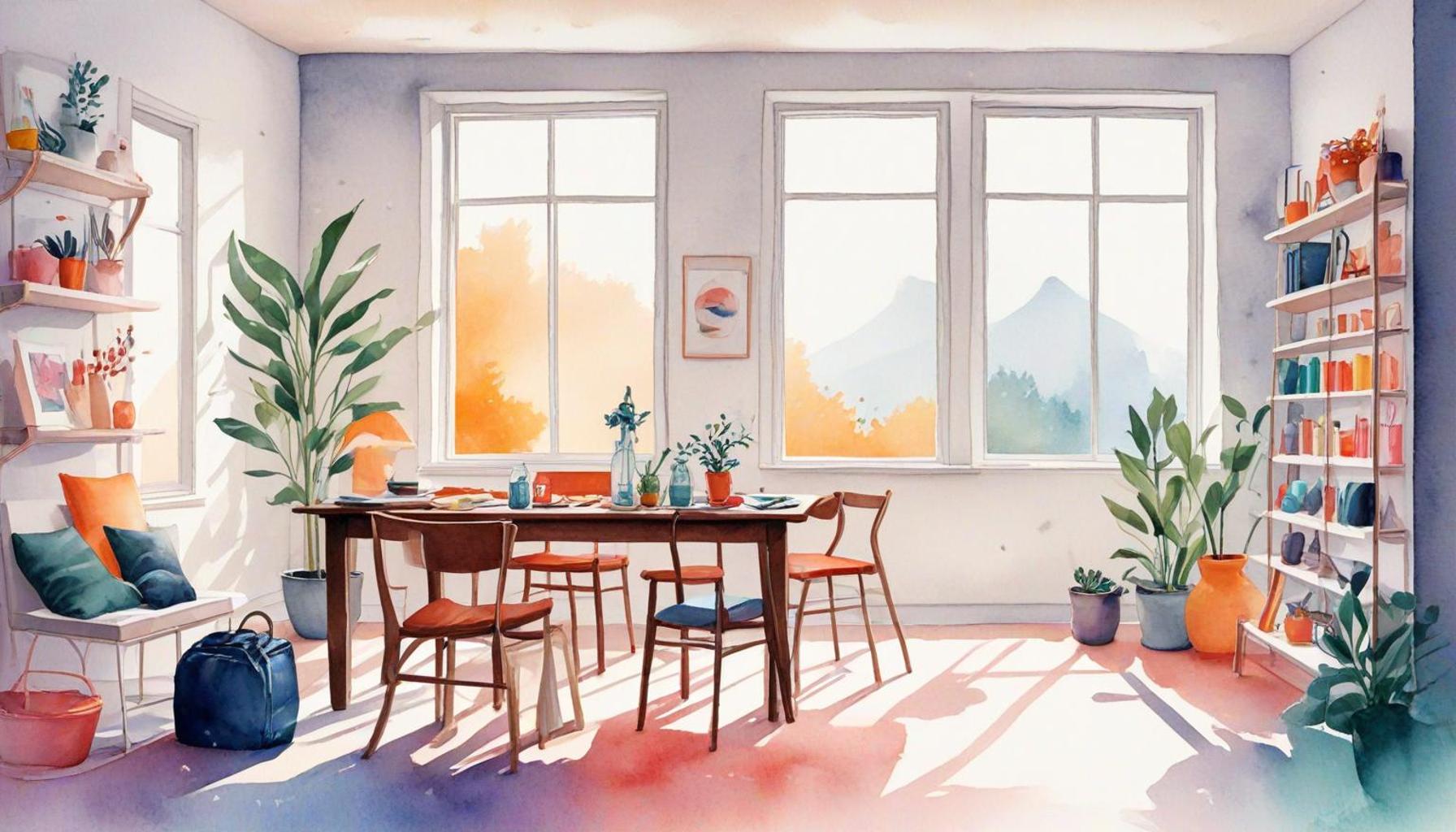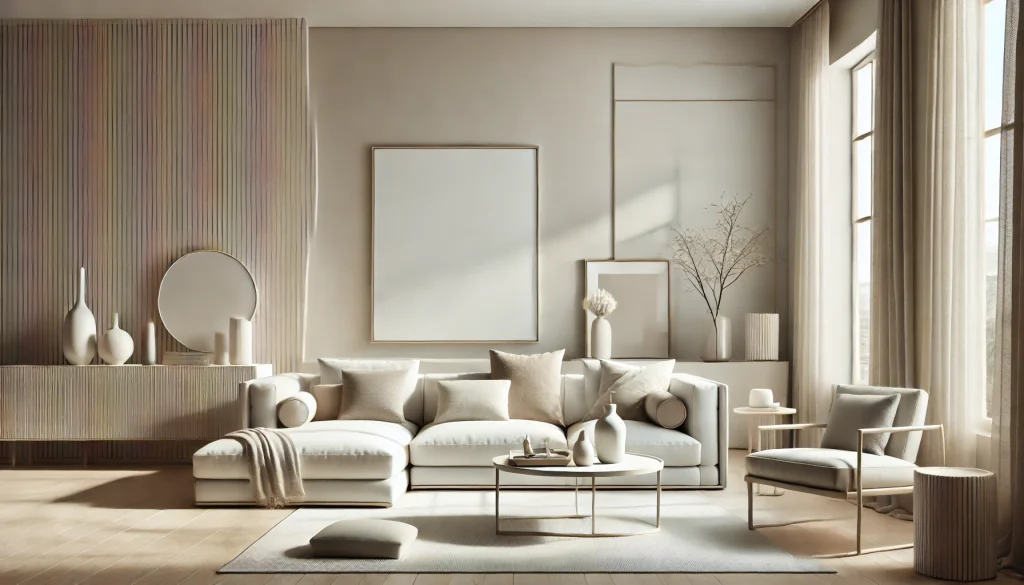The Importance of Intention in Creating a Minimalist Space

Unveiling the Essence of Intention in Minimalism
Creating a minimalist space goes beyond the mere act of decluttering; it encompasses a deeper understanding of the intention behind each element you introduce into your environment. By approaching minimalism with mindfulness, individuals often find that their spaces foster not just tranquility but also improved focus and creativity. This journey into creating a serene living space may hold the key to enhancing your quality of life.
To effectively shape your minimalist environment, consider the following essential elements:
- Purposeful Design: Each item you incorporate should serve a distinct purpose or elicit a positive emotional response. For instance, a book that has influenced your life serves not only as decor but also as a reminder of personal growth and inspiration.
- Mindful Selection: The colors, materials, and decor you choose should collectively promote a soothing atmosphere. Opting for soft pastels or calming neutrals can make a space feel more inviting, while natural materials like wood or stone can enhance the overall tactile experience.
- Functional Layout: Think about the flow of your space. Arrange furniture to create open pathways, allowing for easy movement. A well-designed layout can significantly reduce clutter and chaos, making everyday tasks feel more manageable.
When embarking on your minimalist journey, it’s crucial to reflect on the feelings you wish to inspire within your surroundings. Questions such as, “What emotions do I want my space to invoke?” can guide you as you curate your environment. This reflection is more than a mere exercise; it’s the cornerstone of building a space that resonates with your personal ethos, leading to a more balanced and harmonious lifestyle.
The increasing popularity of minimalism across the United States correlates with broader societal shifts towards sustainability and mental wellness. This movement encourages individuals to prioritize quality over quantity, allowing them to find their unique definition of minimalism that resonates with their values and lifestyle. For instance, the trend of tiny homes exemplifies this ideology, where inhabitants embrace smaller living spaces that promote intentional consumption and genuine connection with their surroundings.
As you explore the intersection of intention and minimalism, consider the profound impact that thoughtful choices can have on your daily life. Each decision, no matter how small, contributes to a larger narrative of who you are and what you value. Join us as we continue to unravel how intention can dramatically shape your minimalist journey and inspire a more conscious way of living.

Dive Deeper: Click here to uncover more insights
Harnessing Intentionality for Meaningful Minimalism
At its core, minimalism is an expression of clarity and purpose. The journey towards crafting a minimalist space involves more than just removing excess items; it requires a deliberate approach to each element chosen for the environment. By embedding intention into every aspect of your surroundings, you transform a simple living space into a sanctuary that reflects your identity and enhances your well-being. Intentionality is what distinguishes a thoughtfully curated space from a barren one.
When defining your intentions for a minimalist space, it is key to understand how different choices will resonate with your lifestyle. Begin by identifying your personal values and how they can be encapsulated within your home. Whether it’s prioritizing sustainability, fostering creativity, or promoting emotional well-being, the underlying motivation will pave the way for a meaningful decluttering process. To assist in this reflection, consider the following guiding principles:
- Clarity of Vision: Before you start sorting through your items, take some time to visualize what your ideal minimalist space looks like. This vision should encompass not only aesthetics but also functionality and emotional resonance. What does a peaceful atmosphere feel like? What colors and textures evoke a sense of calm for you?
- Intentional Ownership: Approach the act of curating items with a mindset of ownership. Ask yourself if each object genuinely serves a purpose in your life or if it merely occupies space. Remember that it is acceptable to let go of things that no longer align with your current intentions, even if they once held value.
- Interconnectedness: Realize that creating a minimalist space involves an intricate relationship between your environment and your mindset. The choices you make should reinforce the intention of nurturing clarity and calmness, ultimately leading to a stronger connection between your physical space and mental state.
In the United States, where consumer culture often inundates individuals with choices, a minimalist approach can feel revolutionary. With a growing focus on mental wellness and the desire for sustainable living, many are seeking solace in simpler environments. By incorporating intention into your minimalist strategy, not only can you cultivate a space that resonates with your values, but you can also make strides towards achieving a holistic lifestyle that prioritizes mental and emotional health.
As you delve deeper into the process of creating your minimalist space, keep contemplating how energy flows through your physical environment. Effective minimalism is not merely about what you remove but also about what you choose to keep. Each decision should be made with purpose, reinforcing your commitment to fostering a balanced and harmonious atmosphere that nurtures both creativity and tranquility.
Whether you’re finding inspiration from the tiny house movement or simply looking to declutter your home, recognizing and integrating intention into every choice is what will ultimately guide you towards a more fulfilling minimalist journey. As we continue to explore the link between intentionality and minimalism, it’s essential to consider how these mindful decisions can serve as a foundation for an enriching living experience.
| Category | Details |
|---|---|
| Purposeful Design | Creating a minimalist space requires a strong intention. Every element should serve a specific purpose, enhancing both functionality and aesthetics. |
| Psychological Calm | A minimalist space fosters mental clarity and reduces distractions, allowing individuals to focus on what truly matters. |
| Sustainable Living | Intentional minimalism encourages conscious choices, promoting sustainability through mindful consumption of resources. |
| Emotional Well-being | A thoughtfully arranged space can improve emotional well-being, creating a sanctuary for relaxation and rejuvenation. |
The importance of intention when creating a minimalist space cannot be overstated. When every object is chosen with care, the overall harmony of a space is enhanced while distractions are minimized. This process of selection is not only about reducing clutter but also about embracing a holistic approach to living. By focusing on less, one can gain clarity, not just in their environment but also in their mind, fostering a serene ambiance that invites creativity and relaxation. Furthermore, the act of thoughtfully designing a space can lead to sustainable lifestyle choices. Prioritizing items that serve multiple purposes or use resources efficiently can decrease the ecological footprint. Such mindful practices shape a lifestyle that aligns with both environmental consciousness and personal peace. Emphasizing intentionality in minimalism ultimately leads to an enriching experience that promotes emotional resilience and satisfaction in everyday life.
DISCOVER MORE: Click here to unlock the secrets
Creating a Cohesive Narrative Through Intentional Design
Minimalism thrives on the idea that less is truly more. However, the effectiveness of this philosophy comes down to the intentionality behind each item in the space, shaping a cohesive narrative that speaks to your individual story. One of the most compelling aspects of minimalism is its capacity to create an environment that not only looks aesthetically pleasing but also fosters a deep connection with its occupants. By deciding with intent what stays and what goes, you begin to weave a narrative into your home that reflects who you are.
To achieve this, consider how different elements can work together to strengthen this personal narrative. For instance, pairing certain decor pieces with complementary furniture can create harmony in your environment. Take the example of a handcrafted coffee table made from reclaimed wood. This item not only serves a functional purpose, but it also aligns with values surrounding sustainability, connecting you to a broader movement towards conscious living. Every thoughtful inclusion or exclusion lays down another thread in the fabric of your home’s story, culminating in a meaningful and relatable atmosphere.
Moreover, the intentional design of spaces doesn’t just rely on physical objects—what about the use of light and color? Minimalist spaces often incorporate natural light as a key element, enhancing feelings of openness and serenity. Furthermore, the strategic utilization of color can imbue the space with emotional weight. Soft hues, such as pale blues or gentle greens, can induce relaxation, while vibrant colors can spark creativity. Your choice of lighting—from warm white bulbs to soft, diffused fixtures—also plays a crucial role in setting the mood, further emphasizing the importance of intention in curating your interior landscape.
Another vital aspect to consider is how intentionality affects functionality. Minimalist living requires a careful evaluation of how space is utilized. Think about multi-functional furniture—like a sofa bed or an extendable dining table—which not only conserves space but embodies purposeful design. This practice encourages you to reflect on your lifestyle needs and adapt your surroundings accordingly, which is a testament to intentional living. By doing so, you foster a space that seamlessly supports your daily rituals and enhances your overall quality of life.
Furthermore, consider how the minimalist philosophy can extend beyond the physical space to influence mental clarity. In the process of intentional decluttering, as you carve out areas of peace, you inadvertently cultivate a mindset that prioritizes simplicity. Studies have shown that a decluttered environment can lead to reduced stress levels and improved focus, making it essential to your well-being. By embracing a minimalist approach rooted in intention, you are not merely creating a space devoid of clutter, but rather fostering an environment where clarity reigns.
Thus, the journey into minimalism necessitates an understanding that each element you select serves a purpose, allowing you to live intentionally. By crafting a minimalist space with intention, you unlock the potential for a balanced and enriching environment, leading you to deeper connections—not only with your surroundings but also with yourself. As you continue along this path, remember that this personalization is central, as a minimalist space is ultimately a reflection of the life you aspire to live.
DIVE DEEPER: Click here to uncover the secrets of intentional choices
Reflection on the Value of Intention in Minimalist Spaces
In conclusion, the significance of intention in creating a minimalist space cannot be overstated. As you curate your surroundings, the emphasis on intentionality transforms a mere living area into a personal sanctuary, echoing your values and lifestyle choices. From the thoughtful selection of decor to the strategic use of color and light, each decision contributes to a meaningful narrative that supports both functionality and emotional well-being.
Moreover, adopting a minimalist approach fosters not only physical clarity but also mental space. As studies have indicated, a well-organized environment can dramatically decrease stress levels and enhance focus. This interconnectedness between your physical space and mental tranquility exemplifies how intentional design impacts overall quality of life.
Consider the broader implications of living with intention. By choosing to surround yourself with items that resonate with your goals and values, you embark on a transformative journey toward conscious living. This is more than an aesthetic endeavor; it is about embracing a lifestyle that prioritizes what truly matters. The minimalist philosophy offers an opportunity to step back and reassess how we interact with our environment and ourselves.
As you navigate your own path to minimalism, remember that every item you choose to keep must serve a purpose, creating a space that not only reflects who you are but also empowers you to live fully. In doing so, you create an enriching environment that is a true reflection of your aspirations, ultimately leading to a more fulfilling and intentional life.



